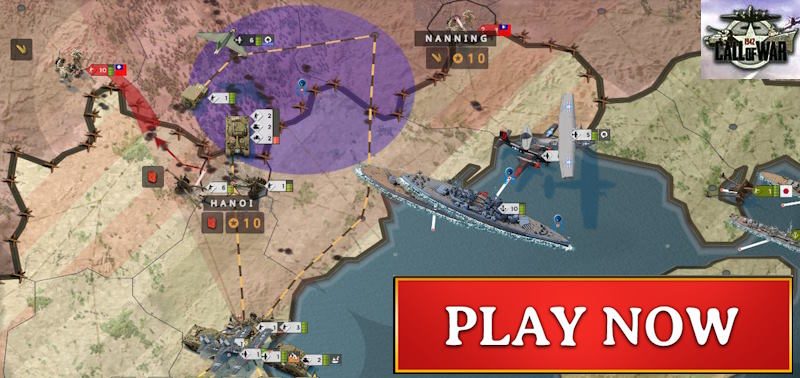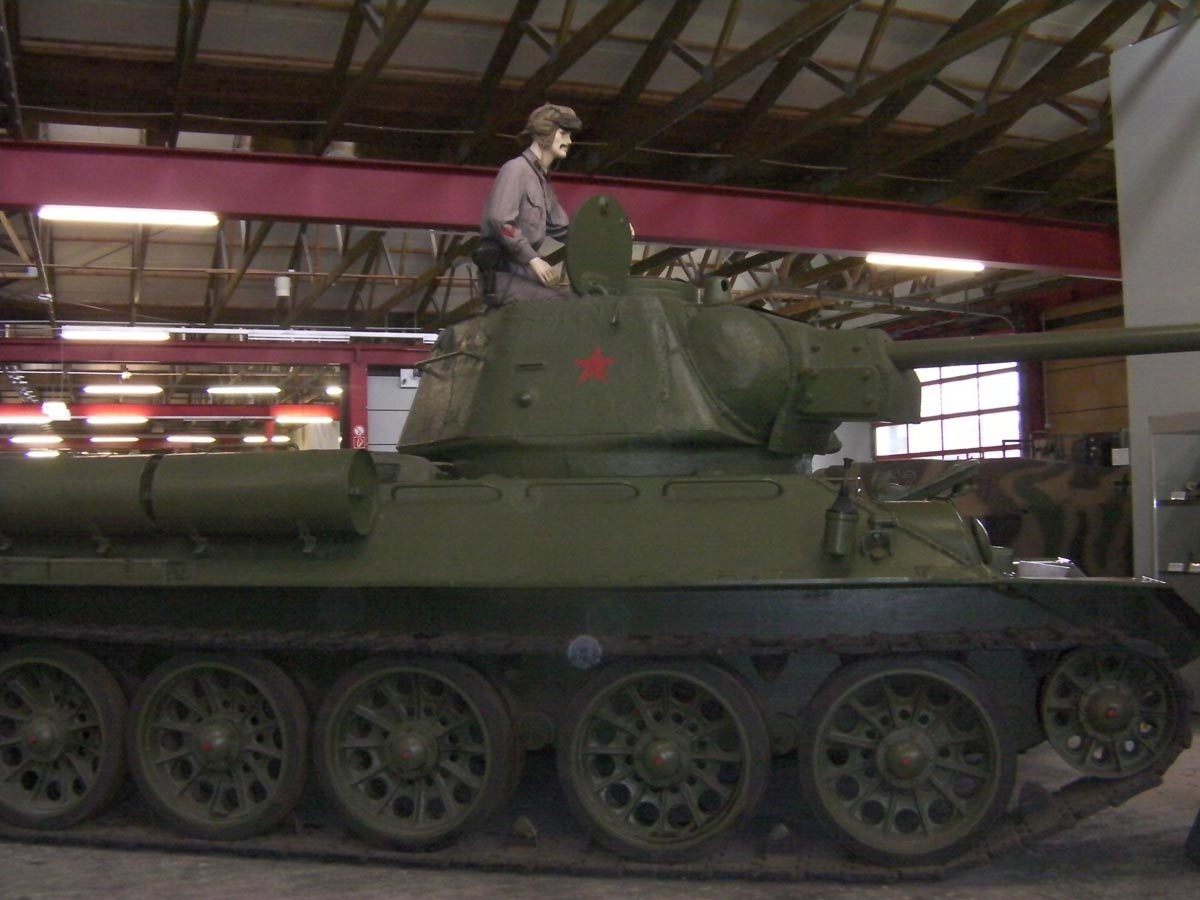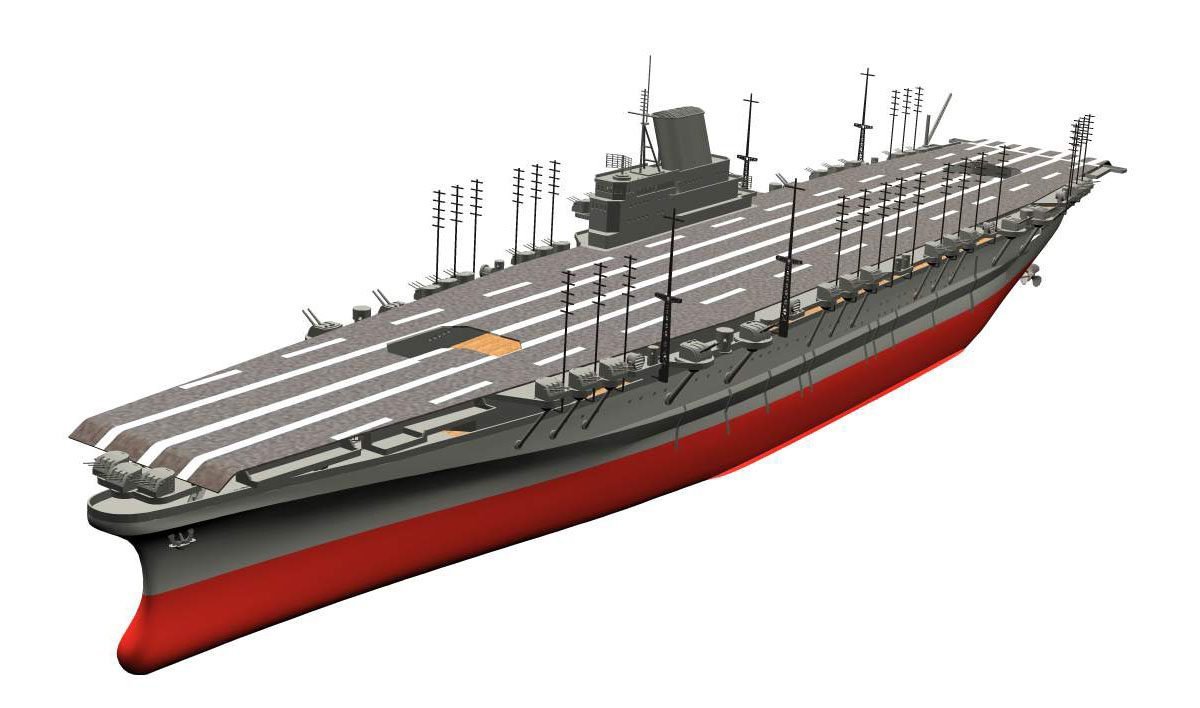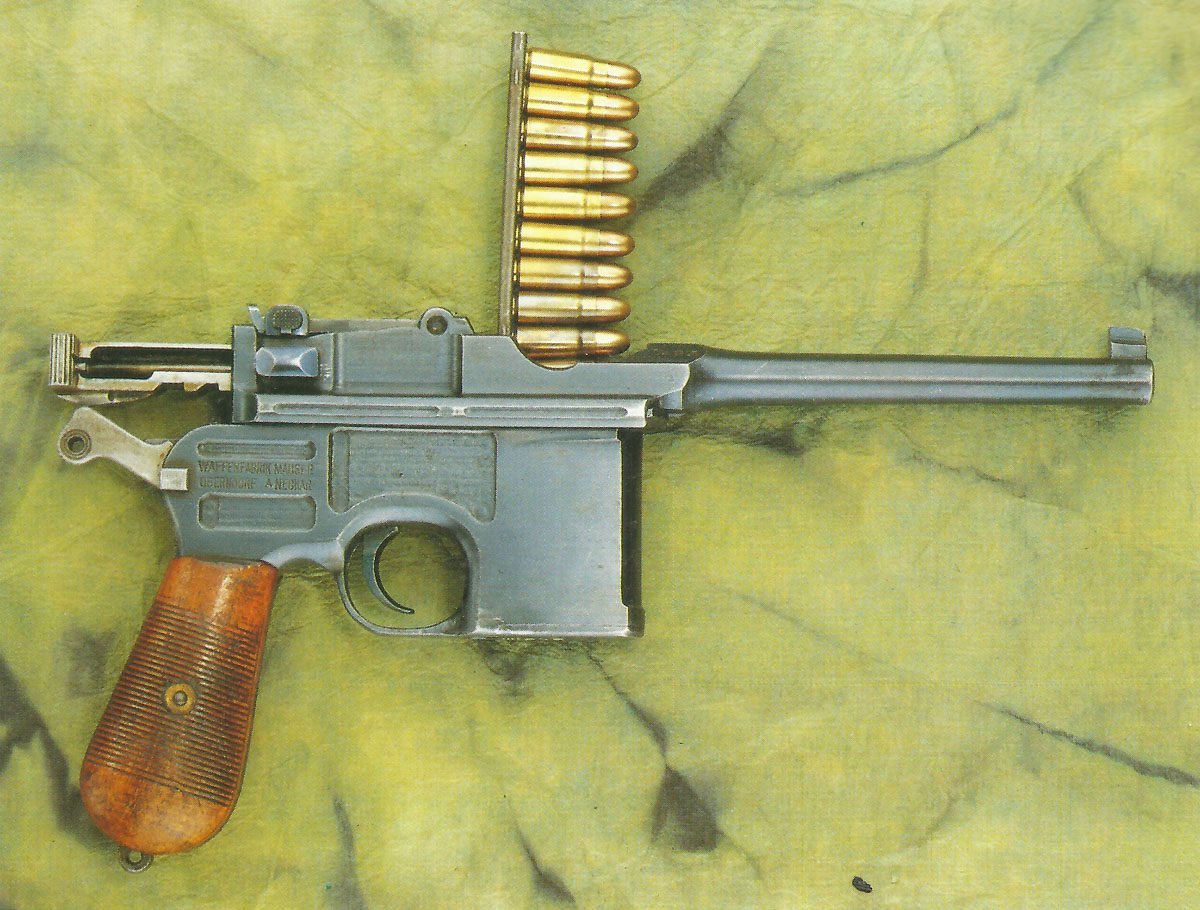Junkers Ju 188 to Ju 488: the further development of one of the legendary aeroplanes in aviation history.
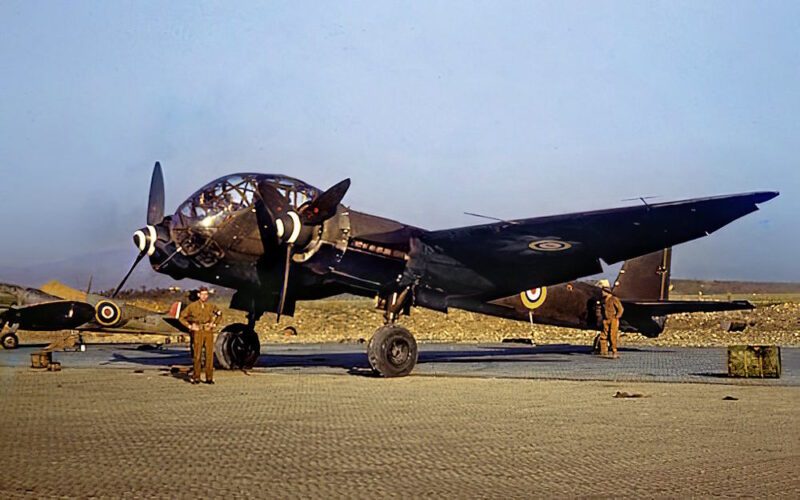
Junkers Ju 188 to Ju 488
Table of Contents
During World War II, the Luftwaffe sought to enhance their aerial capabilities with advanced aircraft designs. Among these efforts were the Junkers Ju 188, Ju 288, and Ju 388. Each model represented a unique attempt to boost the effectiveness of Germany’s aerial fleet. The Ju 188 was intended to succeed the widely used Ju 88, offering improved performance as a high-performance medium bomber. Though it featured advancements, the Ju 188 faced production challenges limiting its deployment.
The Ju 288, originally conceived as an innovative bomber project, aimed to bring superior payload and range capabilities to the Luftwaffe. Despite its ambitious goals, the Ju 288 never saw widespread use due to development and wartime setbacks. Meanwhile, the Ju 388 was engineered for high-altitude operations with advanced features like a pressurized cockpit. Introduced late in the war, its production was hindered by deteriorating conditions.
These aircraft highlight the ingenuity and challenges faced by German engineers during the conflict. Although each held significant promise, all three aircraft saw limited deployment due to various constraints. Readers exploring these aerial innovations uncover a complex period of technological ambition amid the pressures of war.
Historical Context
The Junkers Ju 188 and Ju 388 were import German aircraft in WWII, involved in critical battles, and offering advancements in aviation design. Each model played unique roles in the Air War strategies and impacted the aviation industry significantly.
Development During World War II
The development of the Junkers Ju 188, Ju 288, and Ju 388 was part of Germany’s efforts during World War II to upgrade their military aircraft. The Ju 188 was designed as an improved version of the Ju 88, intending to enhance bombing capabilities and performance.
Meanwhile, the Ju 288 arose from the Bomber B Program, aiming to replace older bombers with more advanced designs. Only a few prototypes were made due to production challenges. The Ju 388 was a late-war development, featuring high-altitude capabilities with a pressurized cockpit, addressing the demand for multi-role aircraft in various combat conditions.
These developments reflected Germany’s strategic move to maintain air superiority against the allied advances.
Role in Air War Strategies
Each aircraft played significant roles in pivotal air battles of the war. The Ju 188 operated over Britain and Russia, showcasing its versatility as a medium bomber. It was used for night missions and anti-ship operations, adapting to various warfare needs.
The Ju 288 was envisioned to take on roles that required long-range attacks and heavy payloads, but it saw limited use due to technical and production hurdles. The Ju 388 was intended for high-altitude reconnaissance and interception, competing against threats like the RAF and other allied air forces.
Each model contributed uniquely to the German Luftwaffe’s air war strategies during pivotal confrontation phases, including preparations for the D-Day Invasion.
Impact on Aviation Industry
The innovations seen in these aircraft influenced both post-war aviation and military aircraft design. The Ju 188 popularized features like a streamlined design and improved bomb payloads, setting standards for modern bomber designs.
The Ju 288 and Ju 388 presented advanced technological ideas such as pressurized cabins and multi-role adaptability, which inspired future generations of aircraft. These innovations showed the potential to handle diverse combat roles, influencing both commercial and military aviation sectors after the war.
Their development endured through technological barriers, driving aviation advancements despite the limitations of wartime production.
Design and Development
The Junkers Ju 188, Ju 288, and Ju 388 exemplify German engineering efforts during World War II. These aircraft evolved from the Ju 88, incorporating new engines, updated cockpits, and enhanced aerodynamics to meet the demands of modern warfare. Each model sought to improve flight performance and operational capability.
Evolution from Ju 88
The Ju 188, Ju 288, and Ju 388 were based on the Ju 88 airframe, a versatile aircraft used by the German Luftwaffe. The design aim was to address limitations of the Ju 88 by improving load capacity and overall performance.
The Ju 188 introduced enhancements suited for high-performance bombing with an improved fuselage. The Ju 288 and Ju 388 pushed these changes further. The Ju 288 aimed for better speed and payload through advanced prototypes, although this model never fully entered mass production. Meanwhile, the Ju 388 was intended for high-altitude operations with pressurization improvements to the cockpit, responding to the need for versatile roles in reconnaissance and bombing.
Engine Installation and Performance
These Junkers aircraft employed a range of engines to enhance flight capabilities. The Ju 188 featured the BMW 801 engines, providing greater power than its predecessors. These engines allowed the aircraft to carry heavier loads with increased speed.
The Ju 288 prototype explored various engine configurations, including the Jumo 222, designed for higher performance but troubled by development setbacks. The Ju 388 was equipped with Jumo 213 engines, capable of reaching high altitudes, ideal for photographic reconnaissance and strategic bombing. Engine integration was a key focus, aiming to maximize output while reducing in-flight issues.
Cockpit and Flight Systems
Cockpit advancements played a significant role in the evolution of the Ju models. The Ju 188 offered improved visibility and ergonomics for the crew, making operations more effective during missions.
A notable innovation in the Ju 388 was its pressurized cockpit, designed for high-altitude flight to protect the crew from thin air conditions. The layout of flight systems was modernized, with better instrumentation for navigation and targeting. These enhancements were crucial for maintaining operational efficiency in challenging environments, setting the models apart in their usability.
Airframe and Aerodynamics
The airframes of the Ju 188, Ju 288, and Ju 388 were developed with careful attention to aerodynamics, improving their in-flight stability and range. The Ju 188 kept a structure similar to the Ju 88, but its aerodynamic refinements allowed for higher efficiency in different operational roles.
The Ju 288 introduced changes aimed at reducing drag and improving lift. For the Ju 388, additional modifications included a streamlined nose and tail, aiding in high-altitude capabilities. These changes made the aircraft more effective under diverse combat conditions, balancing speed with maneuverability.
Technical Specifications
The Junkers Ju 188, Ju 288, and Ju 388 were German aircraft developed during World War II with specific capabilities. Each model offered unique attributes like size, speed, and armament tailored to its intended role.
Dimensions and Weight
The Junkers Ju 188 had a wingspan of about 22 meters and a length of roughly 14 meters. It typically weighed around 11,000 kilograms when fully loaded. The Ju 288 was longer, measuring nearly 19 meters, with a wingspan around 22.50 meters. Its loaded weight was approximately 14,800 kilograms. Meanwhile, the Ju 388 shared a similar wingspan with the Ju 188 but was slightly larger in weight and dimensions due to modifications for high-altitude performance. These differences highlighted their distinctive roles in warfare.
Maximum Speed and Ceiling
The Ju 188 could reach maximum speeds of about 500 kilometers per hour and had a service ceiling of 10,000 meters. The Ju 288 variants offered greater speed, with the Ju 288B reaching up to 670 kilometers per hour. Its ceiling was slightly higher, around 11,000 meters. The Ju 388, designed for high-altitude operations, also boasted a top speed of about 620 kilometers per hour. Its ceiling was significantly higher, allowing it to operate efficiently at altitudes exceeding 14,000 meters. These specifications enabled each aircraft to perform well in their respective operational roles.
Bomb Load and Armament
The Ju 188 carried a bomb load of up to 3,000 kilograms. It was armed with machine guns, including the MG 131, mounted on a dorsal turret and other positions for defense. The Ju 288 also had a substantial bomb load capacity, typically carrying around 3,000 kilograms or more. It included advanced armament to counter enemy fighters. In contrast, the Ju 388 was equipped with a similar bomb load capacity but focused on high-altitude bombing strategies. It featured defensive armaments like the MG 131 machine gun for effective air-to-air combat, making it a formidable aircraft late in the war.
Specifications
Specifications:
Specifications |
Ju 188A-2 |
Ju 188D-1 |
Ju 188E-1 |
Ju 288C-1 |
|---|---|---|---|---|
Type |
medium bomber |
reconnaissance |
medium bomber |
= |
Power plant |
2 x 1,776 hp Junkers Jumo 213A 12-cylinder inverted vee liquid-cooled |
= |
2 x 1,700 hp BMW 801D-2 18-cylinder twin radial engine |
2 x 2,950 hp DB 610A-1/B-1 |
Crew |
4 |
4 |
4 |
4 |
Wing span |
72ft 2in (22.00 m) |
= |
= |
74ft 4in (22.68 m) |
Length overall |
49ft 1in (14.95 m) |
= |
= |
59ft 6.6in (18.15 m) |
Height overall |
14ft 7.2in (4.45 m) |
= |
= |
? |
Wing area |
602.78 sq ft (56.00 m²) |
= |
= |
? |
Max wing loading |
53.03 lb/sqft (258.93 kg/m²) |
= |
53.07 lb/sqft (259.11 kg/m²) |
? |
Max power loading |
9.00 lb/hp (4.08 kg/PS) |
= |
9.41 lb/hp (4.27 kg/PS) |
? |
Weight empty |
21,826 lb (9,900 kg) |
? |
21,738 lb (9,860 kg) |
? |
Weight loaded |
31,967 lb (14,500 kg) |
33,730 lb (15,300 kg) |
31,989 lb (14,510 kg) |
47,124 lb (21,375 kg) |
Maximum speed |
323 mph at 19,685 ft (520 km/h at 6,000 m) |
350 mph at 27,000 ft (560 km/h at 8,235 m) |
311 mph at 19,685 ft (500 km/h at 6,000 m) |
407 mph at 22,310 ft (655 km/h at 6,800 m) |
Cruising speed |
249 mph at 19,685 ft (400 km/h at 6,000 m) |
? |
233 mph at 16,405 ft (375 km/h at 5,000 m) |
? |
Climb performance |
20 min to 20,015 ft (6,100 m) |
? |
17,6 min to 20,015 ft (6,100 m) |
? |
Service ceiling |
31,170 ft (9,500 m) |
36,090 ft (11,000 m) |
30,675 ft (9,350 m) |
34,120 ft (10,400 m) |
Range |
1,491 miles (2,400 km) with 3,307 lb (1,500 kg) bombs |
? |
1,212 miles (1,950 km) with 4,409 lb (2,000 kg) bombs |
2.600 km |

Specifications |
Ju 388J-1 |
Ju 388L-1 |
Ju 488 (V403) |
|---|---|---|---|
Type |
night fighter |
reconnaissance |
heavy bomber |
Power plant |
2 x 1,800 hp BMW 801TJ |
2 x 1,800 hp BMW 801TJ |
4 x 2,500 hp Jumo 222A-3/B-3 |
Crew |
4 |
3 |
3 |
Wing span |
72 ft 2.1 in (22.00 m) |
= |
102 ft 7.5in (31.28 m) |
Length overall |
58 ft 1in (17.70 m) |
49 ft 10.4in (15.20 m) |
76 ft 3in (23.24 m) |
Height overall |
14ft 2.9in (4.34 m) |
= |
? m |
Wing area |
602.78 sqft (56.00 m²) |
= |
? |
Max wing loading |
53.67 lb/sqft (262.05 kg/m²) |
= |
? |
Max power loading |
8.99 lb/hp (4.08 kg/PS) |
= |
? |
Weight empty |
22.928 lb (10,400 kg) |
22,806 lb (10,345 kg |
? |
Maxmimum weight |
32,353 lb (14,675 kg) |
= |
79.366 lb (36,000 kg) |
Maximum speed |
362 mph at 40,355 ft (583 km/h at 12,300 m) |
383 mph at 40,290 ft (616 km/h at 12,280 m) |
429 mph at 23,620 ft (690 km/h at 7,200 m) |
Cruising speed |
? |
? |
? |
Climb performance |
21 min to 26,245 ft (8,000 m) |
30 min to 36,090 ft (11,000 m) |
? |
Service ceiling |
42,650 ft (13,000 m) |
44,095 ft (13,440 m) |
37,240 ft (11,350 m) |
Range |
1,010 miles (1,625 km) |
2,159 miles (3,475 km) with auxiliary tank |
2,113 miles (3,400 km) |

Armament:
Armament |
Ju 188A-2 |
Ju 188D-1 |
Ju 188E-1 |
Ju 288C-1 |
|---|---|---|---|---|
Front armament |
1 x 20-mm-MG 151/20 |
= |
= |
? |
Dorsal position |
1 x 20-mm-MG 151/20 in dorsal turret; 1 x 13-mm MG 131 manually rear dorsal position |
= |
= |
different remote-controlled armament |
Ventral position |
1 x 13-mm MG 131 or twin 7.92-mm-MG 81 at rear ventral position |
= |
= |
different remote-controlled armament |
Bomb load |
6,614 lb (3,000 kg) bomb load or two 2,200 lb (1,000 kg) torpedeos under inner wings |
– |
6,614 lb (3,000 kg) bomb load or two 2,200 lb (1,000 kg) torpedeos under inner wings |
6,614 lb (3,000 kg) bomb load |
Armament |
Ju 388J-1 |
Ju 388L-1 |
Ju 488 (V403) |
|---|---|---|---|
Front armament |
2 x 30-mm MK 108; 2 x 20-mm-MG 151/20 |
– |
– |
Dorsal position |
2 x 20-mm MG 151/20 ‘Schräge Musik’ upward firing |
2 x 13-mm MG 131 in remote-controlled rear barbette |
2 x 20-mm MG 151/20 in dorsal turret; 2 x 13-MG 131 in tail turret |
Ventral position |
– |
– |
– |
Bomb load |
– |
(up to 6,614 lb/3,000 kg for the K-Bombers) |
11,023 lb (5,000 kg) internal bomb load |
Service statistics:
Service statistics |
Ju 188A-2 |
Ju 188D-1 |
Ju 188E-1 |
Ju 288C-1 |
|---|---|---|---|---|
First flight |
Prototype Ju 88B-0 early 1940; Ju 88 V27 September 1941; Ju 188V-1 December 1941 |
= |
March 1942 |
January 1941 |
Commissioning |
After mid-1943 |
1943 |
mid-1943 |
some after 1941 with operational units |
Final delivery |
May 1945 |
May 1945 |
? |
1941 |
Production figures |
all versions c. 1,100 |
more than half of the total production of 1,100 |
all versions c. 1,100 |
total 21 prototypes |
Service statistics |
Ju 388J-1 |
Ju 388L-1 |
Ju 488 (V403) |
|---|---|---|---|
First flight |
early 1944 |
late 1943 |
– |
Commissioning |
– |
from August 1944 |
– |
Final delivery |
– |
May 1945 |
– |
Production figures |
3 prototypes |
120 |
1 prototype |
Operational History
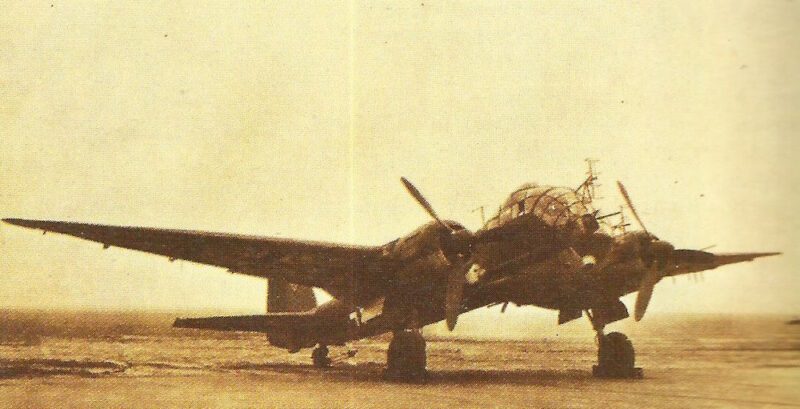
The Junkers Ju 188, Ju 288, and Ju 388 played varied roles in the German Luftwaffe during WWII. Each had its own mission focus, from medium bombers to high-altitude fighters and reconnaissance aircraft.
Ju 188 Service with Luftwaffe
The Ju 188 was deployed by the German Air Force primarily as a medium bomber and reconnaissance aircraft. Its design improved on the Ju 88 with enhanced payload and performance capabilities. Though introduced late in the war, it served in several roles including reconnaissance missions due to its versatile design.
Key Features:
- Enhanced payload capacity
- Versatile operational roles
- Focus on reconnaissance missions
Despite being a solid design, its late introduction limited its impact on the war.
Ju 288 and the Schnellbomber Concept
The Ju 288 was part of the Schnellbomber concept, which aimed to develop fast, medium-sized bombers capable of avoiding enemy fighters through speed alone. However, the Ju 288 struggled to progress beyond prototype stages due to technical challenges and shifting priorities in the Luftwaffe.
Highlights:
- Developed only in prototype form
- Part of the Schnellbomber initiative
- Faced technical and strategic challenges
Ju 388’s Role as a High-Altitude Fighter
The Ju 388 was intended to capitalize on high-altitude capabilities, serving as a multi-role aircraft suitable for night fighting. It featured a pressurized cockpit designed for operations at altitudes too high for many allied aircraft to reach.
Notable Aspects:
- High-altitude operations
- Multi-role functionality including night fighting
- Introduced late in the conflict
Production issues and the demanding war environment meant only limited numbers were deployed.
Photo Reconnaissance and Night Fighter Operations
Both the Ju 188 and Ju 388 participated in reconnaissance and night fighter missions. The Ju 188 was versatile, finding success in reconnaissance roles. The Ju 388, meanwhile, was tailored for night and high-altitude operations, fitting into roles crucial for gathering intelligence and intercepting enemy aircraft.
Essential Operations:
- Ju 188: Effective in reconnaissance due to design flexibility
- Ju 388: Specialized in high-altitude and night fighting roles
These roles highlighted the adaptability and innovation of German aircraft development despite war-time constraints.
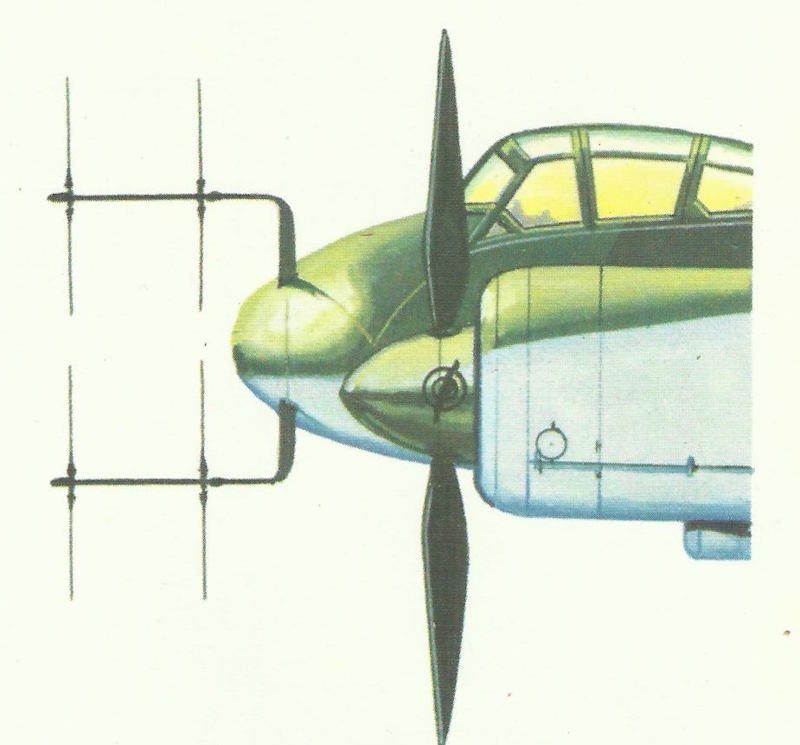
Surviving Aircraft and Legacy
Junkers aircraft like the Ju 188, Ju 288, and Ju 388 played crucial roles during World War II. While most aircraft were lost after the war, a few have been preserved in museums. These models have influenced later aircraft designs, showing how technology evolved over time.
Preserved Models and Exhibits
Several Ju 388 models have found homes in aircraft museums around the world. The National Air and Space Museum holds a Ju 388 L-1 at their Silver Hill facility. This example offers a unique look at the advanced design features of the Ju 388, such as its pressurized cockpit. Although a similar preservation effort has not been successful for the Ju 188 and Ju 288, knowledge of their existence adds to the historical tapestry of World War II aviation.
Wright Field, a former U.S. Army Air Forces base, evaluated captured German aircraft after the war, including the Ju 188 and Ju 388. These evaluations helped fill gaps in aviation history and allowed engineers to study enemy technology. While no models displayed here are available for public viewing today, the research conducted remains invaluable.
Influence on Post-War Aircraft Design
The technological advancements found in Junkers aircraft significantly influenced post-war aviation. The pressurized cockpits of the Ju 388 and the high-performance designs of the Ju 188 and Ju 288 contributed to developments in both military and civilian aircraft.
Features such as enhanced aerodynamics and payload capacities were reviewed by international engineers, leading to improvements in aircraft speed and efficiency. While they did not directly lead to new aircraft models, they enrich the foundation upon which future engineers built.
Such contributions highlight the importance of the technological progress that the Junkers aircraft signified during their era.
Variants and Models
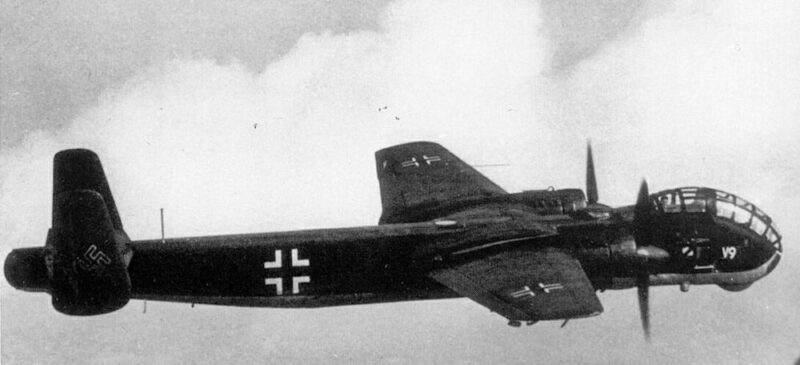
The Junkers series consisted of different models with distinct features. The Ju 188, Ju 288, and Ju 388 each served unique roles and showcased advancements in aviation technology.
Distinguishing Features of Ju 188 Variants
The Ju 188 had several variants designed for different purposes. The Ju 188A was a standard bomber version, while the Ju 188E served as an improved version with better avionics. For maritime roles, the Ju 188E-1 offered enhanced capabilities, including torpedo-bomber equipment.
Switching the major payload to underwing racks helped address the limitation in internal bomb storage observed in earlier models. This made the aircraft versatile. Despite variations, all models retained the base design of the Ju 88.
The successor to the Ju 88 flew for the first time at the end of 1942. The prototype was a modified Ju 88 with pointed wingtips, square-cut vertical tail rudders and BMW 801MA engines. Jumo 213A-1 engines powered the Ju 188A-0, A-2 and A-3. The latter variant had a Hohentwiel radar and could carry two 800 kg torpedoes under the wing.
Before the A models, there was the Ju 188E with BMW 801 engines, consisting of the E-0, E-1 and the E-2 torpedo bomber. The E-1 entered service in mid-1943.
The other major series, which accounted for more than half of the approximately 1,100 Ju 188s built, were the Ju 188D-1 and D-2, equipped with Jumo engines, and the Ju 188F-1 and F-2 with BMW 8011 engines. All these types were basically reconnaissance variants and were used by reconnaissance groups on the eastern and western fronts and in Italy.
The projected C and G (bomber) and H and M (reconnaissance) series did not go into production, and the Ju188J, K and L were developed separately as the Ju 388J, K and L.
The Ju 188R, a further development of the E, was an experimental night fighter; the Ju 188S-1 and T-1 were respectively unarmed fast bomber and reconnaissance versions with Jumo 213E-1 engines, redesigned front fuselages and pressurised cabins for high-altitude flight.
The Ju188S-1/U armoured version for close air support had a 50 mm BK 5 cannon in a lower fuselage.
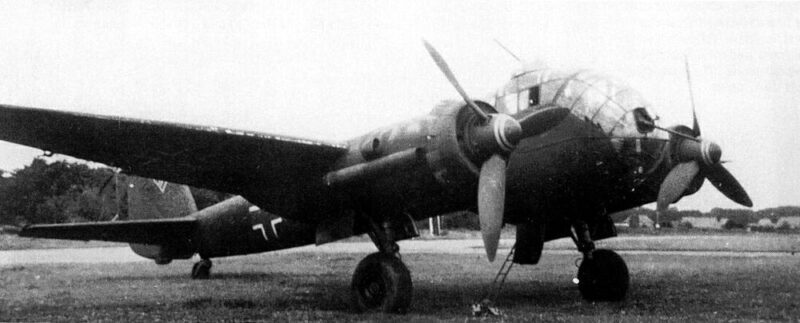
Comparison of Ju 288 Models
The Ju 288 project aimed to deliver improved performance over earlier models. It remained primarily in prototype stages, with its development ultimately focused on speed and range. The Ju 288B was equipped with DB 606 engines, marking a significant evolution from prior designs.
The overall concept struggled with delays, leading to only a limited number of test aircraft being produced. As a result, the Ju 288 did not progress beyond the experimental phase, restricted to testing innovations in engine and airframe technologies.
The elegant Ju288 was the favourite for the 1939 ‘Bomber B’ tender and the official contender for a Ju88 successor, but suffered many development setbacks – including engine allocation problems – and the entire programme was discontinued in mid-1943 after 21 prototypes had been completed.
These were for the production series designated Ju 288A (V1 to V5), Ju288B (V6 to V9 and V11 to V14) and Ju288C (V101 to V108), with various BMW, Daimler-Benz or Junkers Jumo engines, different combinations of remote-controlled armament and an internal bomb load of 3,000 kg (6.6141b).
The first flight took place in January 1941 and some of the prototypes were later used by operational units.
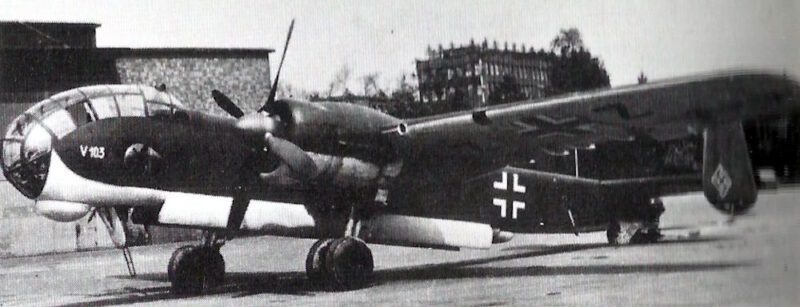
Advancements in the Ju 388 Series
The Ju 388 series built on the Ju 188’s foundation, adding capabilities for high-altitude missions. Key models included the Ju 388J for fighter roles, Ju 388K for bombers, and Ju 388L series designed for reconnaissance.
A key feature was the Ju 388 L-0 and L-1, boasting pressurized cockpits for crew safety at high altitudes. Introduced late in World War II, production numbers remained low but highlighted advancements in pressurization and flight technology, setting groundwork for future aircraft developments.
Despite the priority given to the project in autumn 1943, only the Ju388L – a photo-reconnaissance version of the Ju 188S and T high-altitude version – saw action, and even this was limited.
Based on the Ju388L V1 (a converted Ju 188T-1 with first flight in late 1943), 10 pre-production Ju 388L-0s were built by Allgemeine Transportanlagen GmbH (ATG) and 45 Ju 388L-1s by ATG and Weser. The operational testing of the L-0 was carried out from August 1944 at EKdo 388 and the L-1 was later used by the ‘Versuchsverband Oberbefehlshaber der Luftwaffe’.
The standard armament for all Ju388s was a remote-controlled rear barbette with two 13-mm MG131 machine guns, but
lengthy development and delayed deliveries of this installation led to the L-0 being armed instead with a belly mount with two rear-firing 7.9-mm MG 81s.
The L-1 then had the rear barbette. A few of these were converted to L-1/b with a third MG 131 in the rear of the cockpit. There were two L-3s with 1,750 hp Jumo 213E-1 engines.
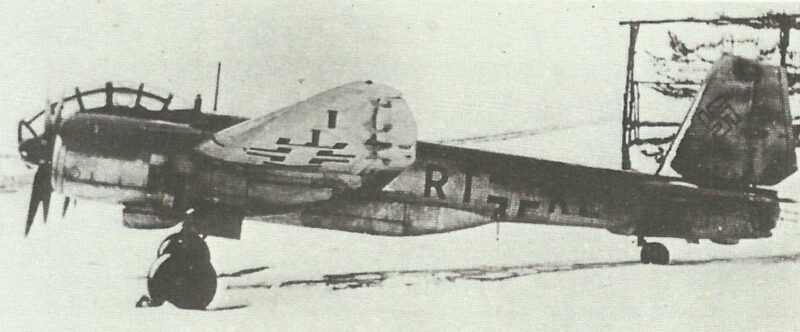
There were three prototypes (V2, V4 and V5) for the planned Ju 388J-1/2/3/4 as night and bad weather fighters. The latter would have with a Lichtenstein SN-2 radar in a pointed, fixed nose, an underbody hull with two 30mm MK108 and two 20mm MG 151-
guns and two MG 151s firing upwards (‘oblique music’). But despite having the highest priority among all Ju 388 variants, production never materialised.
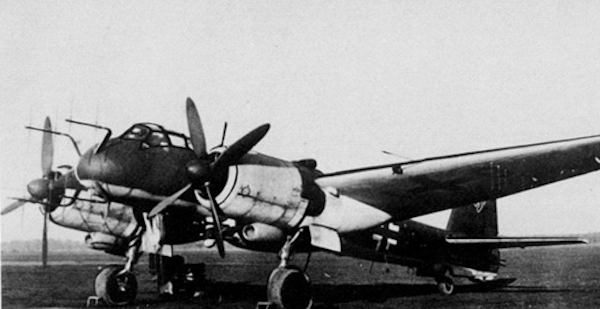
Only 10 Ju 388K-0s and five K-1 bombers (maximum bomb load 3,000 kg) followed the V3 prototype, and these were not used in action anymore. Another unfinished project was the Ju 388M-1, a four-seater torpedo bomber.
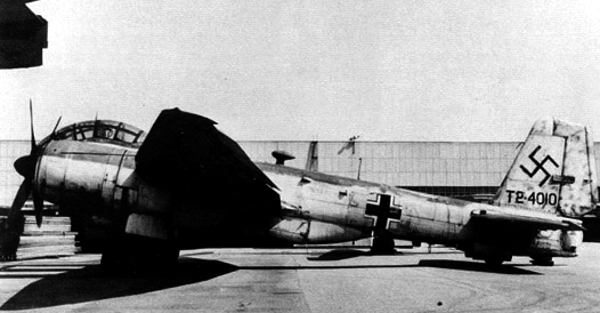
The Ju 488 strategic bomber
The Junkers Ju 488 (Ju 488 V401 and V402) strategic bomber of 1944 was originally intended to be built with the outer wings of the Ju 388K and a front pressurised fuselage, a Ju 188E rear fuselage and a Ju 288C tail unit. The bomber was later redesigned
(V403 to V406), retaining only the front fuselage of the Ju 388K to carry a 5,000 kg bomb load, more fuel and remote-controlled barbettes in the rear (two MG 151s) and in the tail (two MG 131s) with four engines.
Only the prototype was completed, which was ready to fly in Toulouse when the Allies overran France.
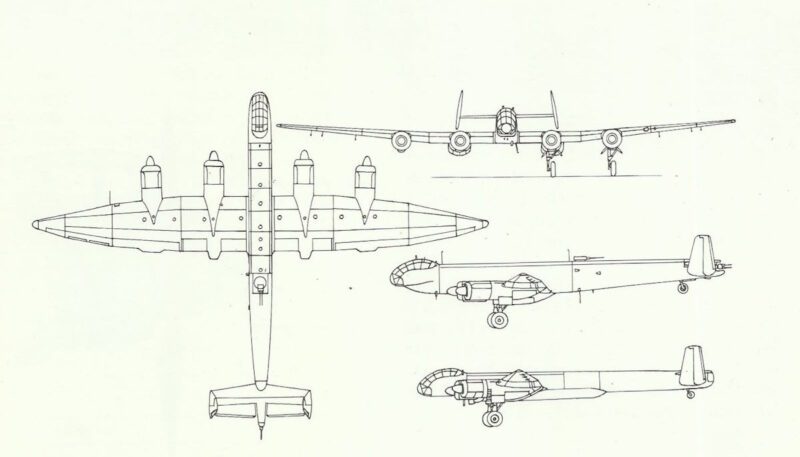
Weapon Systems and Defensive Measures
The Junkers Ju 188, Ju 288, and Ju 388 were designed with robust weapon systems for protection and offense. This included various gun turrets and advancements in missile technology to enhance their defensive capabilities.
Gun Turrets and Machine Guns
The Ju 188 and Ju 388 featured multiple gun turrets for defense. These contained both forward and rear-facing machine guns, providing coverage from various angles. The Ju 188 was known for its versatility, often equipped with MG 151 cannons or MG 131 machine guns.
The Ju 288, though primarily a prototype, also integrated similar defensive firepower. This emphasis enhanced crew protection against enemy aircraft and improved combat survivability. The weapons layout allowed these bombers to engage in defensive maneuvers effectively.
Advances in Air-to-Air Missile Technology
During the late stages of World War II, air-to-air missile technology saw groundbreaking advances. The Ju 388 was notably fitted with advanced Ruhrstahl X-4 missiles. These were some of the first guided missiles designed for airborne interception.
The Henschel Hs-298 was also under consideration but mainly saw limited use. These innovations aimed to tackle the increasing threat from enemy fighters. The integration of such missiles represented a significant shift in aerial warfare tactics, offering a technological edge despite production challenges.
Production and Manufacturing
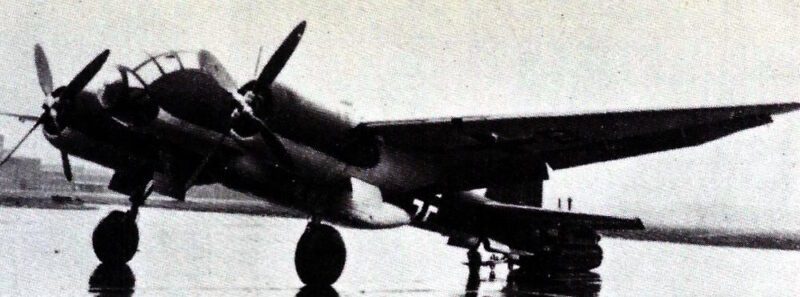
The production of the Junkers Ju 188, Ju 288, and Ju 388 faced several challenges, from the selection of suitable factories to dealing with wartime material shortages. These issues had a significant impact on how many aircraft were produced and when they were completed.
Factories and Production Numbers
The Junkers Ju 188 was primarily produced at Junkers factories, with Alfred Gassner and W.H. Evers involved in its development. This model saw relatively higher production numbers compared to some of its counterparts. Efficient use of existing facilities helped maintain steady output.
In contrast, the Ju 288 faced issues with resource allocation and never saw mass production. Only prototypes existed, illustrating the difficulties involved. Meanwhile, the Ju 388 was introduced too late in the war, resulting in limited production.
Challenges in Mass Production
Production of these aircraft models was complicated by several factors, such as limited materials and shifting priorities during WWII. For the Ju 188, improvements like the use of BMW 801 engines required adjustments in manufacturing techniques.
The Ju 288 struggled with engine reliability, further delaying any large-scale production. For the Ju 388, the need for high-altitude capabilities led to its pressurized cockpit design, causing additional manufacturing hurdles. Wartime conditions exacerbated these issues, affecting timely development.
Cultural and Historical Impact
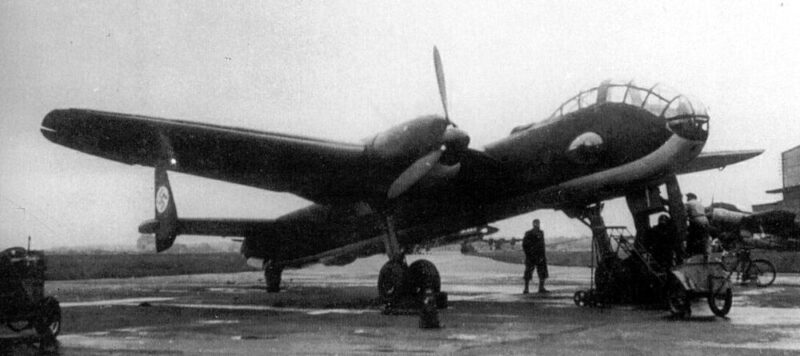
The Junkers Ju 188, Ju 288, and Ju 388 played significant roles in military aviation during World War II, leaving an impact remembered in military contexts and cultural depictions. These aircraft are noted for their technical advancements and are often featured in media exploring World War II aviation.
Recognition in Military Aviation History
The Junkers Ju 188, Ju 288, and Ju 388 were part of Germany’s efforts to enhance aerial capabilities during World War II. The Ju 188 was an improvement over the Ju 88, offering better performance and payload capacity. The Ju 288 faced production challenges and was eventually overshadowed by evolving war demands.
The Ju 388, introduced late in the war, stood out for its high-altitude capabilities and pressurized cockpit, adapting to combat needs. Their innovations in design and function illustrate the technological strides in aircraft development. The Heinkel He 111 and He-177 were also significant in the Luftwaffe, showing varied design approaches.
Depiction in Media and Literature
World War II aviation is a popular theme in media and literature, with aircraft like the Junkers Ju 188, Ju 288, and Ju 388 often featured. Their appearances in documentaries and films highlight their role and technological innovations. These depictions help audiences understand their impact on aviation history.
Books about World War II technology frequently mention these aircraft, discussing their designs, missions, and how they compared to contemporaries like the Henschel Hs-129 and Project Sea Horse. Through these representations, the aircraft continue to capture the interest of historians and military enthusiasts.
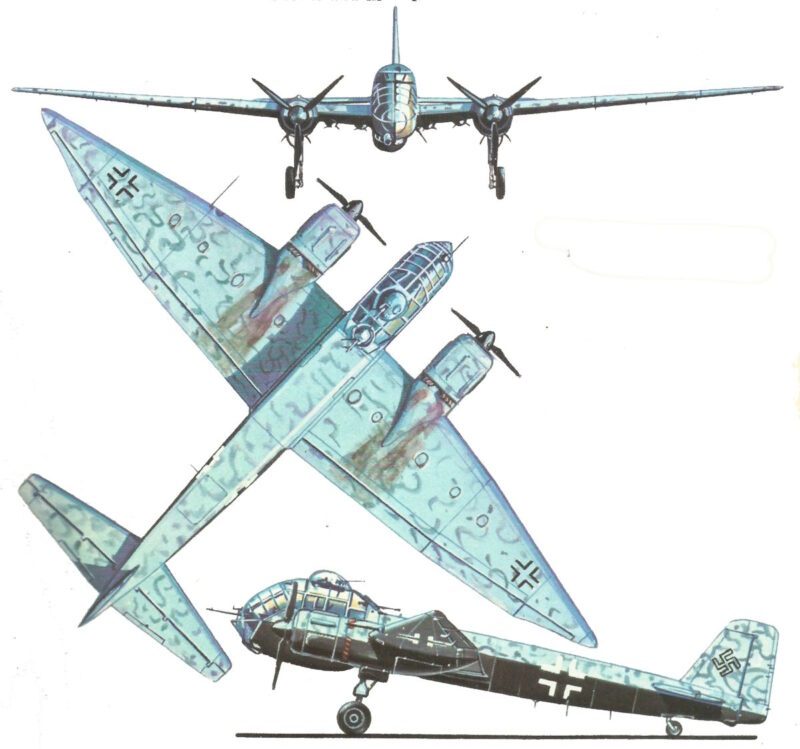
Frequently Asked Questions
The Junkers Ju 188, Ju 288, and Ju 388 were pivotal aircraft developed by Germany during World War II. Each model had distinct roles and advancements reflective of the shifting needs and technologies of the time.
What were the primary roles of the Junkers Ju 188 in World War II?
The Junkers Ju 188 was designed as a high-performance medium bomber. Its primary role was to succeed the Ju 88 with improved speed, payload, and versatility. The aircraft played a significant part in various bombing missions, thanks to its adaptability to different combat needs.
How did the performance of the Ju 388 compare to earlier models in the series?
The Ju 388 was an advanced, multi-role aircraft intended for high-altitude missions. It surpassed earlier models like the Ju 188 and Ju 88 by featuring a pressurized cockpit and more powerful engines, allowing it to operate at greater altitudes and at higher speeds, enhancing its strategic effectiveness.
What advancements were made in the Ju 288’s design over its predecessors?
The Ju 288 was developed to replace the Ju 88, featuring a more streamlined design and more powerful engines. It offered improvements in range, speed, and bomb payload capacity. However, technical difficulties and changing war conditions limited its production and deployment.
Are there any preserved Ju 188 aircraft on display today?
Few Ju 188 aircraft have survived the war. Currently, there are no complete Ju 188 models on public display. However, parts and fragments can be found in various museums dedicated to World War II aviation history.
What were the reasons behind the cancellation of the Ju 288 program?
The Ju 288 program faced numerous challenges, including performance issues and production delays. These were compounded by shifting priorities in the Luftwaffe’s strategy and resource constraints caused by the ongoing Allied bombing campaigns, ultimately leading to its cancellation.
How does the Ju 388’s top speed compare to other aircraft of its time?
The Ju 388 achieved a top speed of around 610 km/h (380 mph), which was competitive with other high-altitude aircraft of its era. Its performance benefited from advanced engines and design features, making it a formidable opponent in the skies during its brief service period.
References and literature
Combat Aircraft of World War II (Bill Gunston)
Technik und Einsatz der Kampfflugzeuge vom 1. Weltkrieg bis heute (Ian Parsons)
German Aircraft of World War 2 in Colour (Kenneth Munson)
Warplanes of the Luftwaffe (David Donald)
The Luftwaffe Album, Bomber and Fighter Aircraft of the German Air Force 1933-1945 (Joachim Dressel, Manfred Griehl)
Junkers Ju 88 in action, Part 2 (Brian Filley)



